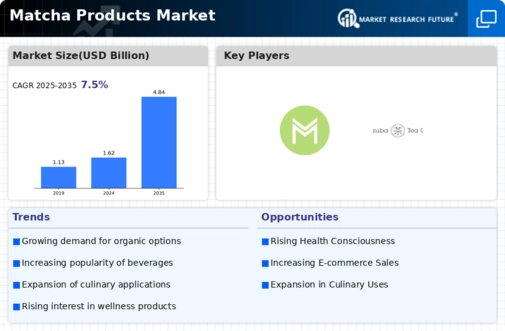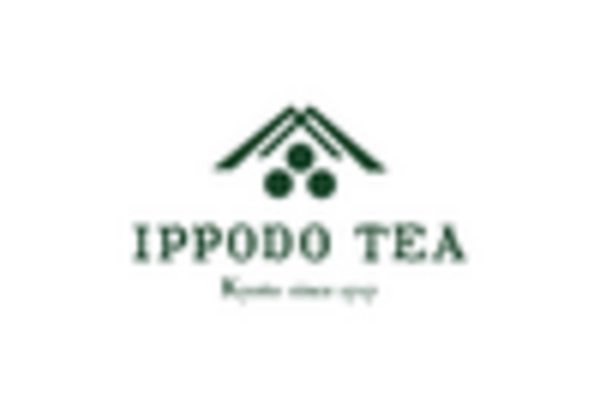Market Growth Projections
The Global Matcha Products Market Industry is projected to witness substantial growth over the next decade. With a market value expected to reach 4.84 USD Billion by 2035, the industry is poised for significant expansion. The anticipated CAGR of 10.45% from 2025 to 2035 indicates a robust growth trajectory, driven by various factors such as health trends, product innovations, and increased consumer awareness. This growth presents opportunities for both established brands and new entrants to capitalize on the rising demand for matcha products globally.
Diverse Product Innovations
Innovative product offerings within the Global Matcha Products Market Industry are likely to attract a wider consumer base. Companies are increasingly introducing matcha-infused products, such as snacks, beverages, and cosmetics, catering to diverse preferences and lifestyles. This diversification not only enhances consumer engagement but also positions matcha as a versatile ingredient in various sectors. As a result, the market is poised for substantial growth, with a projected CAGR of 10.45% from 2025 to 2035. Such innovations may enable brands to tap into new demographics, further solidifying matcha's presence in the global market.
Rising Health Consciousness
The Global Matcha Products Market Industry experiences a notable surge in demand driven by increasing health consciousness among consumers. As individuals become more aware of the health benefits associated with matcha, such as its high antioxidant content and potential weight management properties, the market is likely to expand. This trend is particularly evident in regions where wellness trends are gaining traction, leading to a projected market value of 1.62 USD Billion in 2024. The shift towards healthier lifestyles appears to be a significant factor influencing purchasing decisions, thereby propelling the growth of matcha products globally.
Cultural Influence and Popularity
The Global Matcha Products Market Industry is significantly influenced by cultural trends and the growing popularity of matcha in Western countries. Originally rooted in Japanese tea culture, matcha has gained traction among consumers seeking unique flavors and experiences. This cultural shift is evident in the increasing number of cafes and restaurants offering matcha-based beverages and desserts. As matcha becomes more mainstream, its market presence is expected to expand, contributing to the overall growth trajectory. The rising interest in authentic culinary experiences may further enhance the appeal of matcha products globally.
Expansion of E-commerce Platforms
The Global Matcha Products Market Industry benefits from the rapid expansion of e-commerce platforms, which facilitate easier access to matcha products for consumers worldwide. Online retailing allows brands to reach a broader audience, particularly in regions where traditional retail channels may be limited. This trend is expected to contribute to the market's growth, as consumers increasingly prefer the convenience of online shopping. The projected market value of 4.84 USD Billion by 2035 suggests that e-commerce will play a crucial role in driving sales and enhancing brand visibility in the matcha sector.
Sustainability and Ethical Sourcing
Sustainability and ethical sourcing practices are becoming increasingly relevant within the Global Matcha Products Market Industry. Consumers are more inclined to support brands that prioritize environmentally friendly practices and fair trade sourcing. This trend is likely to drive demand for matcha products that are certified organic and sourced from sustainable farms. As awareness of environmental issues continues to rise, brands that align with these values may experience enhanced consumer loyalty and market share. This shift towards sustainability could potentially influence the growth dynamics of the matcha market in the coming years.

















Leave a Comment